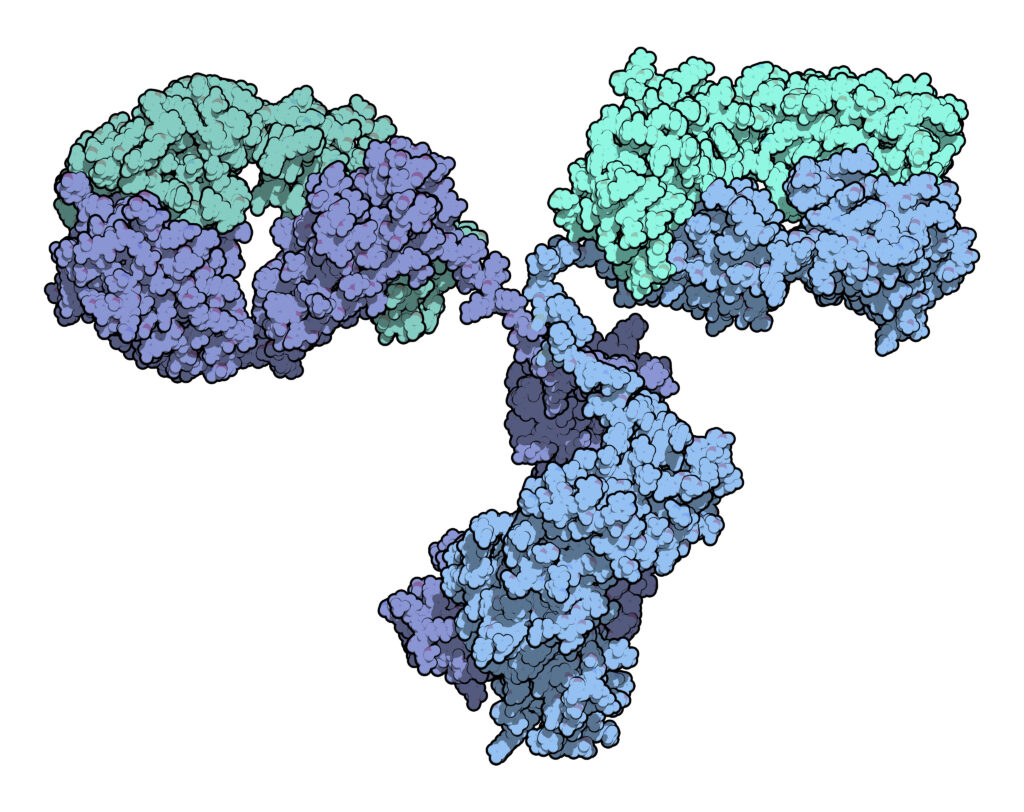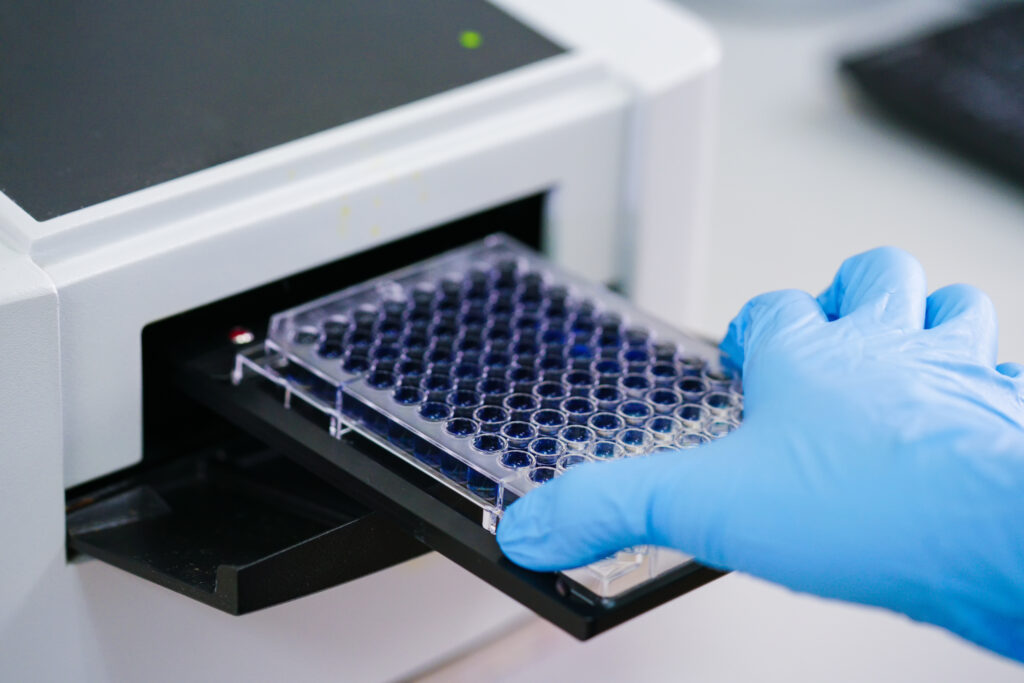
Labeled antibodies are indispensable tools in research and clinical diagnostics, used in everything from cell imaging and ELISAs to immunotherapies and ADC development. But if you’ve ever tried labeling antibodies the traditional way—purify, buffer exchange, conjugate, purify again—you know it can be tedious and time-consuming. That’s where on-bead conjugation steps in with a solution.
In a study published in the Journal of Immunological Methods, Nath et al. (2015) describes a high-throughput, high-recovery method for on-bead antibody-small molecule conjugation that simplifies the workflow by combining purification and labeling into a single streamlined step. Using high-capacity magnetic Protein A and Protein G beads (Magne® Protein A/G Beads) developed with HaloTag® technology, researchers could conjugate directly from dilute cell media—no need for prior purification or high antibody titers.
How It Works
The researchers engineered magnetic cellulose beads coated with HaloTag® fusions of Protein A or Protein G—two ligands commonly used to bind antibodies. The HaloTag® platform comes with covalent and oriented antibody attachment, ensuring consistent antibody capture while minimizing nonspecific interactions or protein leaching during washes. Magne HaloTag® Beads were used for HaloTag-fusion immobilization, and HisLink™ Protein Purification Resin supported upstream protein purification.
With this system in place, they tested the ability to purify and label multiple mouse and human IgG isotypes directly from cell culture supernatants. Using small volumes of antibody-containing media (as low as 1 mL, ~50 µg/mL antibody), they demonstrated efficient conjugation with several dyes, including AlexaFluor® 532, AlexaFluor® 647, and Fluorescein, using both amine and thiol chemistry.
Key Findings
- One-Step Workflow: Capture and label antibodies in a single process through combined purification and conjugation steps, with washing steps used to remove unreacted dye while antibody remains immobilized on the bead.
- Low Sample Requirement, High Recovery: Labeled antibody yields ranged from 50-70%, which compared favorable to the conventional solution-based conjugation method that yielded 30-55%. This approach also provided evidence of working with low-abundance antibodies, important for hybridoma screening or early-stage development.
- Optimal Labeling: Fluorescently labeled antibodies consistently achieved dye-to-antibody ratios (DARs) in the optimal range of 2–4. This is advantageous for amine-based chemistries, where on-bead conjugation allows efficient labelling at low antibody concentrations – avoiding high input requirements needed to overcome hydrolysis in conventional solution-based methods.

- Functionally Validated: Trastuzumab labeled using this method retained binding affinity for HER2 in ELISA (using Promega’s Anti-Human IgG (H+L)-HRP Conjugate and TMB Substrate), and successfully internalized into HER2-positive SKBR3 cells, confirming antibody functionality was preserved. This is critical for ensuring that labeled antibodies can still bind their targets and be used in biologically relevant assays.
- Flexible and Scalable: The research found that the method was compatible with multiple antibody isotopes – whether purified or directly from culture media – which allows for supporting parallel processing for higher-throughput labeling.
Downstream Compatibility
This method doesn’t stop at fluorescent labeling—its flexibility makes it useful for a wide range of downstream applications, including:
- ADC Development: Conjugate cytotoxic payloads to antibodies for use in preclinical screening.
- Functional Assays: Directly test labeled antibodies in ELISA, flow cytometry, or cell-based internalization studies.
- Multiplexing: Parallel labeling of multiple antibodies with different dyes or tags.
Explore More
Promega’s ADC Discovery and Development tools are designed to support workflows like this. From conjugation-ready purification kits to internalization and potency assays, we provide the flexibility and scalability you need to further therapeutic antibody development.
Want to see the full paper? Read it here
References
- Nath, N., Godat, B., Benink, H., & Urh, M. (2015). On-bead antibody-small molecule conjugation using high-capacity magnetic beads. Journal of Immunological Methods, 426, 95–103. https://doi.org/10.1016/j.jim.2015.08.008
Latest posts by Shannon Sindermann (see all)
- How Calcium Shapes Cell Communication and Invasion - November 13, 2025
- Do Mosquitoes Have a Taste for Beer? - October 16, 2025
- Exploring How NEAT1 Shapes Granulosa Cell Function - September 18, 2025
